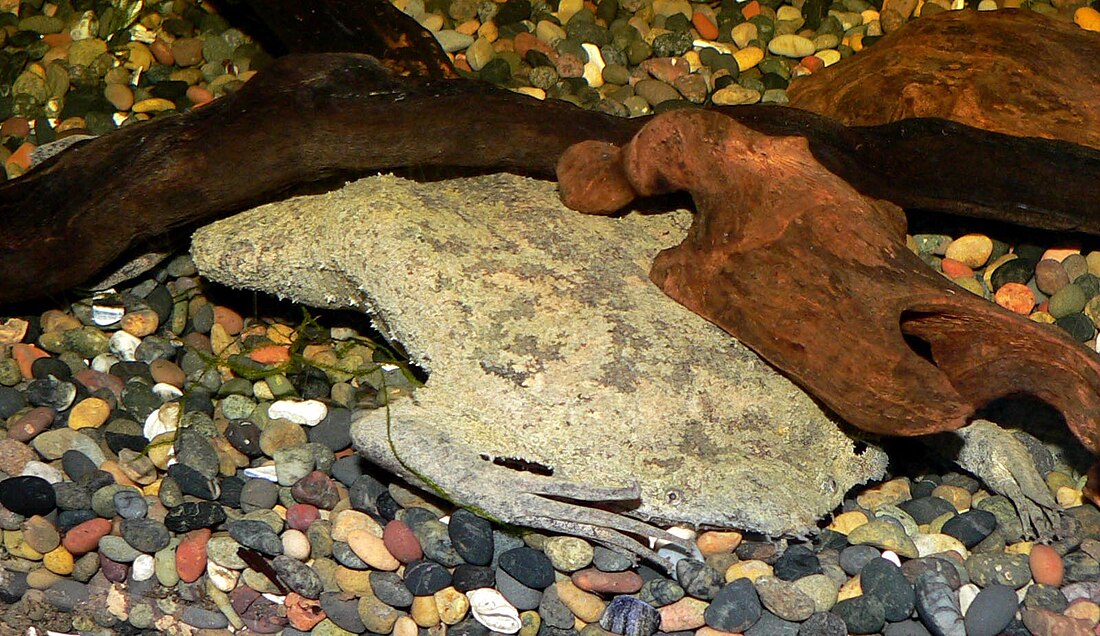Pipa (frog)
Genus of amphibians From Wikipedia, the free encyclopedia
Suriname toads are members of the frog genus Pipa, within the family Pipidae.[1][2][3] They are native to northern South America and extreme southern Central America (Panama).[1] Like other pipids, these frogs are almost exclusively aquatic.
| Pipa | |
|---|---|
 | |
| Gray Pipa pipa under driftwood | |
| Scientific classification | |
| Domain: | Eukaryota |
| Kingdom: | Animalia |
| Phylum: | Chordata |
| Class: | Amphibia |
| Order: | Anura |
| Family: | Pipidae |
| Genus: | Pipa Laurenti, 1768 |
| Type species | |
| Pipa pipa Linnaeus, 1758 | |
| Species | |
|
Pipa arrabali | |
Species
There are seven recognized species:[1][2]
- Pipa arrabali Izecksohn, 1976 – Arrabal's Surinam toad
- Pipa aspera Müller, 1924 – Albina Surinam toad
- Pipa carvalhoi (Miranda-Ribeiro, 1937) – Carvalho's Surinam toad
- Pipa myersi Trueb, 1984 – Myers' Surinam toad
- Pipa parva Ruthven and Gaige, 1923 – Sabana Surinam toad
- Pipa pipa (Linnaeus, 1758) – Surinam toad
- Pipa snethlageae Müller, 1914 – Utinga Surinam toad
In addition, Pipa verrucosa Wiegmann, 1832 is included here incertae sedis.[1]
Ecology and behavior
This section includes a list of general references, but it lacks sufficient corresponding inline citations. (January 2024) |
Life cycle
During reproduction the female Pipa frog will rise to the surface of the water with the male and after a series of movements the male fertilizes the eggs of the female. The male then places the eggs on the females back with its feet. The female Pipa frog will then incubate the eggs in the dorsal (its back). The tadpoles then develop in the dorsal of the female.
References
External links
Wikiwand - on
Seamless Wikipedia browsing. On steroids.
